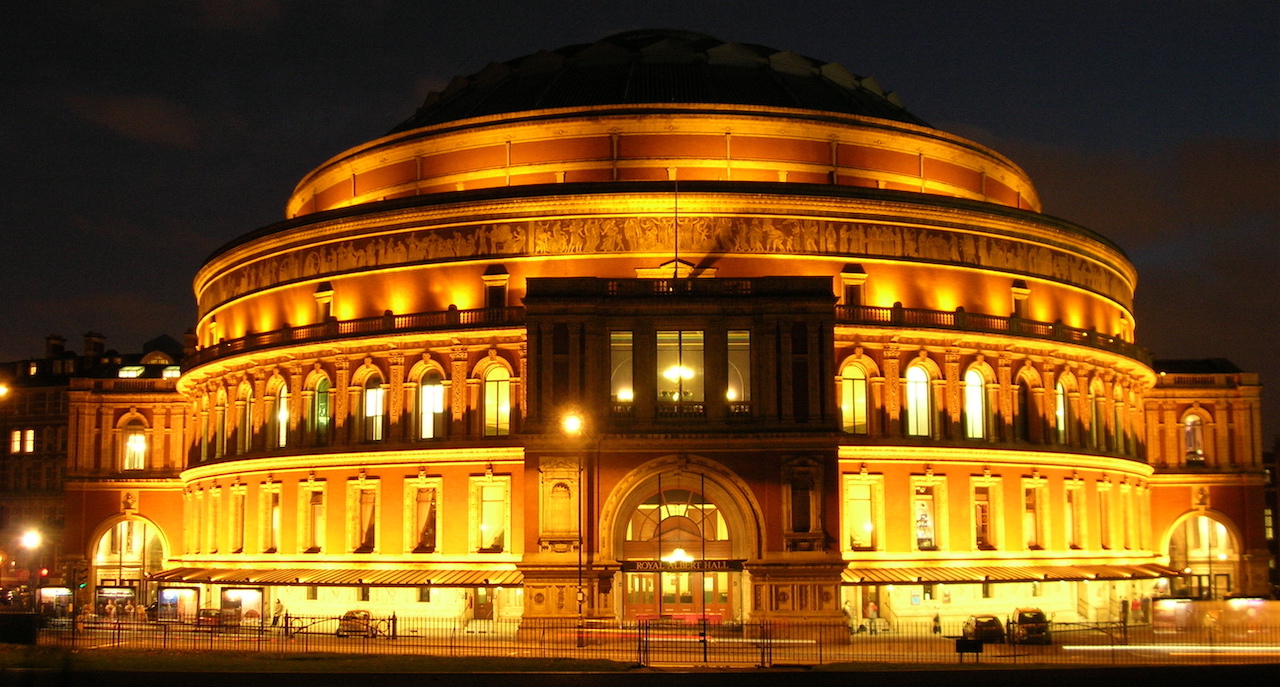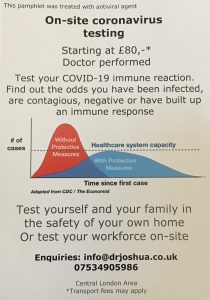Thursday 23 April 2020

London’s Royal Albert Hall – each week the number of extra deaths would fill it (smolloy)
This morning, as I went out for my morning stagger-stumble, I saw around me many others. Plenty were being more than selfish, yet their antics had me thinking. They say that lockdown is fragmenting, irrespective of what the bigwigs suggest. As an individual living through this crisis, I see disobedience around me. That is growing daily.
The televised evening press briefings are partly to blame as, each time, there is a note of optimism, followed by, “But we must keep going as otherwise our efforts will be wasted.”
That may be correct, but it does not fit a Londoner’s psyche. The bigwigs are allowing the capital to feel too optimistic. For many of my fellow Londoners, when we are shown the steady decline in hospital admissions for Covid-19, this means lockdown can be broken. I am not sure that I agree.
Even spam mail is now reappearing, although how it arrived in mid-lockdown escapes me. It seems I can have my computer repaired for a fortune, on the basis that the bloke who poked the card through my letterbox had not left the advertising card crawling with virus. I left it on my mat for 24 hours before spraying the card clean and handling it with tongs. I can also have a Covid-19 antibody test by a Dr Joshua in my home, or so the unsolicited card advertised, and at a quarter the price of anywhere else. I have not taken up the offer.
To investigate a Londoner’s psyche, three years ago, One4all, which is linked to the Post Office, undertook a survey to look at happiness in England. The study showed that London was a miserly, selfish city, where people generally did not do things for others. Sheffield and Brighton were similarly affected. The places to be, if you sought kindness and support, were Plymouth, Manchester and Liverpool. Perhaps I should not be surprised that those around me are as they are, each person believing in a Divine right to be a lockdown exception.
As people pretend they are being acceptable, when in reality they are way off-beam, the police sneak quietly through the capital’s streets and parks to keep an eye on everyone’s behaviour. Sunbathers are moved on, those relaxing on outdoor benches are told to start walking, and groups of revellers – they still exist – are dismantled in a jiffy. I cannot see how it is possible to enforce a strict lockdown without more positive action being taken, or perhaps the government is hoping for controlled misbehaviour. As yet I have not seen a soldier on the street, but I wager the military is not distant.
How big is the problem, I wonder? Is the lockdown actually doing any good? For several weeks, life has been Covid-this and Covid-that, as if there is nothing else in existence beyond the virus. So, I thought I would look at the data, although I should warn that numbers have never been my thing. I had to abandon mathematics at school and have long since claimed to have dyscalculia. In UK, at least England and Wales, plenty of numbers are held by the Office for National Statistics (ONS). It has done so for a very long time. Its findings, now I have seen them, do trouble me.

The situation this morning – 23 April 2020 (courtesy Center for Systems Science and Engineering at Johns Hopkins University)
Each week in England and Wales, before Covid-19 was invented, it was normal for about 10,000 people to perish, regardless of the cause. It was just the way life was. Most were elderly, fewer were young, but even the young sadly die on occasion. Horrifyingly, roughly 50 youngsters aged under one year will die each week.
I took a standard period and selected weeks 11 to 15, which is approximately mid-March to mid-April. I then went back five years. The average number of deaths for this same period, over the last five years and from all causes, not just Covid-19, was 52,733. For 2020 it was 67,708, an increase of nearly 15,000. Most of this increase was aged over 65 years. In contrast, those aged between 15 and 44 years are smiling, as the figures barely flicker. During this same period, only 1489 of them died, which makes them 90% better than their seniors. No wonder they want to lock up codgers and throw away the key. Yet regardless of age, Covid-19 is not a disease anyone should be seeking.
Fifteen thousand people, five weeks, and just England and Wales? How might that compare? During the 1976 Argentinian coup d’état when Perón was taken captive, it is said that 15,000 died. A typical, large mass gravewill contain 400 bodies. That is nearly 38 mass graves. Or, the Royal Albert Hall would be filled with dead people each week. These figures do not make happy reading and show why I, for one, must take lockdown seriously, even if I live in selfish London.
There is a fair amount of research going on to look into immunity to Covid-19 at the moment. Twenty thousand households in the UK have been contacted to see if they are happy to help. They will be tested weekly for five weeks and then monthly for a year. Blood samples will also be taken to see who has developed antibodies and what level of immunity may exist as a result. An ELISA test (okay, if you insist – Enzyme-Linked ImmunoSorbent Assay) is currently being validated by Oxford University and should be available on or about 4 May. It seems that none of the 3.5 million antibody tests that the UK bought from China, for a staggering £20 million, was usable. Situation normal for government-led healthcare.
The WHO has advised that perhaps as few as 2-3% of the world’s population has antibodies in the blood to show they have been infected with Covid-19. That does not bode well for herd immunity, which was one of the bases on which our current instruction has been given.
To confuse us further, this advice from WHO does not match with a study from California, which says that the number of people infected with coronavirus may be tens of times higher than previously thought. Stanford University tested 3300 people and found the virus was 50-85 times more common than official figures suggested. The Los Angeles Times also reported that coronavirus could have been in California much earlier than first thought, and possibly in December 2019. Covid-19 may not have been recognised, as there was a severe influenza season taking place at the time.
Healthcare workers, it appears, are up to 15 times more likely to test positive for Covid-19 than non-healthcare workers. A research group from Rutgers University in the USA’s New Jersey, looked at 546 healthcare workers and 283 non-healthcare workers. Covid-19 infection was found in 7.3% of the healthcare workers and 0.4% of the non-healthcare workers. The majority of infected healthcare workers (62.5%) were nurses.

The rhesus macaque can develop Covid 19 immunity (Magda Ehlers from Pexels)
It seems clear that the boffins still have much to work out when it comes to immunity. Certainly, research from Beijing demonstrated that some rhesus macaque monkeys showed no reinfection when exposed to the virus a second time, implying that they had developed immunity on first exposure. Despite the finding, I always feel upset when I read of animal research. My own grasp of the study, however, is that they looked at a small number of animals and the second exposure was only 30 days after the first, so I am unsure how much we can conclude.
Meanwhile, another paper from China has suggested that the concentration of antibodies peaks roughly three weeks after the onset of symptoms but then slowly declines. This does not look good for longstanding natural immunity for those who have been infected and may explain the reports from Japan and China of patients who developed Covid-19 twice. After all, if one looks at coronaviruses that are associated with the common cold, reinfections are frequent, so it may be that Covid-19 is the same.
There is much work ahead.

